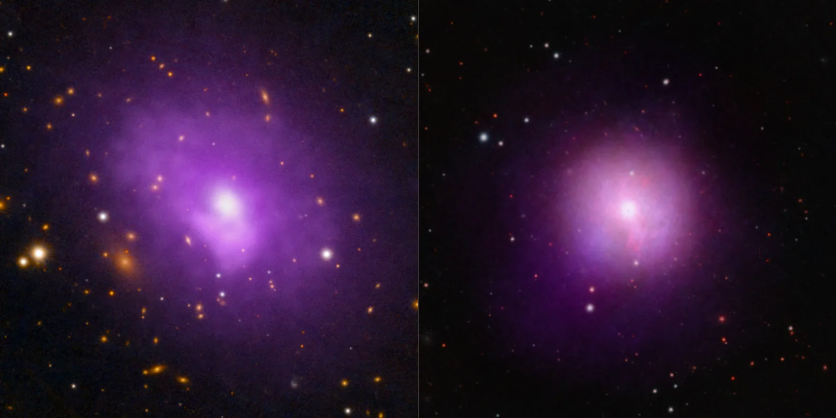NASA's Chandra X-ray Telescope and other telescopes have detected the presence of 16 supermassive black holes emitting powerful beams into space.

16 Supermassive Black Holes Ejecting Powerful Beams
Astronomers, utilizing data from NASA's Chandra X-ray Observatory and the U.S. National Science Foundation (NSF) National Radio Astronomical Observatory's (NRAO) Very Large Baseline Array (VLBA), have analyzed the trajectory of these beams both in the present and in the past.
The study reveals that some of these beams have undergone significant changes in direction over time. By examining the cavities carved out by these beams millions of years ago, researchers could infer the historical trajectories of these powerful emissions. Intriguingly, comparing past and present directions shows that some beams have shifted by substantial angles.
The images captured by Chandra depict hot gas within galaxy clusters, with each image featuring a supermassive black hole at its center. These black holes within galaxies surrounded by hot gas serve as the origin points for the powerful beams observed.
A noteworthy finding from the study is that approximately one-third of the galaxies examined exhibit beams pointing in vastly different directions than their past orientations. Some of these beams have deviated by almost 90 degrees, occurring over timescales ranging from one million years to tens of millions of years.
According to NASA, given the age of these black holes, estimated to be around 10 billion years old, such rapid changes in orientation are considered significant.
Gravitational Pull of Black Holes
The generation of these beams is attributed to the gravitational pull of the black holes, which draw in the surrounding material, forming a spinning disk. A portion of this material is then ejected outward, generating the observed beams.
The alignment of these beams with the rotation axis of the black holes suggests a connection between the two, with the direction of the beams indicative of the rotation axis.
These beams are believed to influence star formation within galaxies by injecting energy into the surrounding hot gas, thereby inhibiting the formation of new stars. The alteration in the direction of these beams can have profound implications for star formation processes.
Scientists believe that the emissions from black holes, along with the voids they create, significantly impact the formation of stars within their respective galaxies.
These emissions inject energy into the hot gas surrounding the galaxy, hindering its ability to cool and generate a considerable quantity of new stars sufficiently.
According to NASA, if the emissions undergo substantial directional changes, they have the potential to suppress star formation across broader expanses of the galaxy.
Related Article : NASA's Hubble Space Telescope Captures 'Butterfly Nebula' In Stunning Motion | Fun Facts About This Beautiful Space Butterfly

ⓒ 2025 TECHTIMES.com All rights reserved. Do not reproduce without permission.




